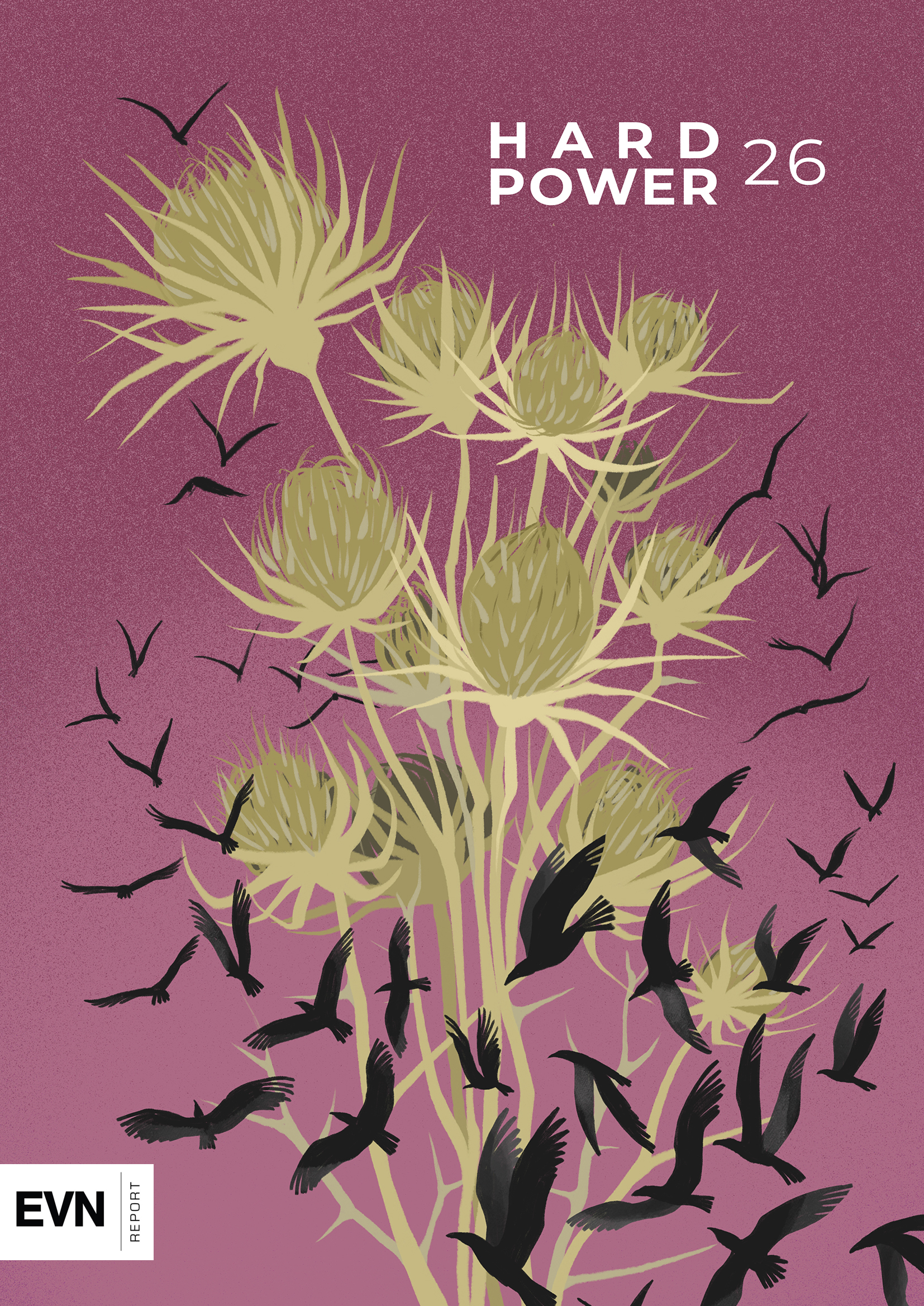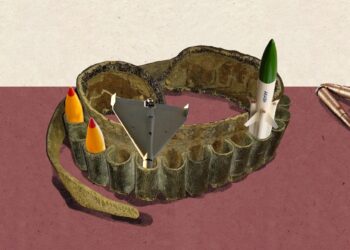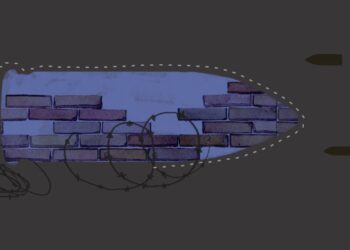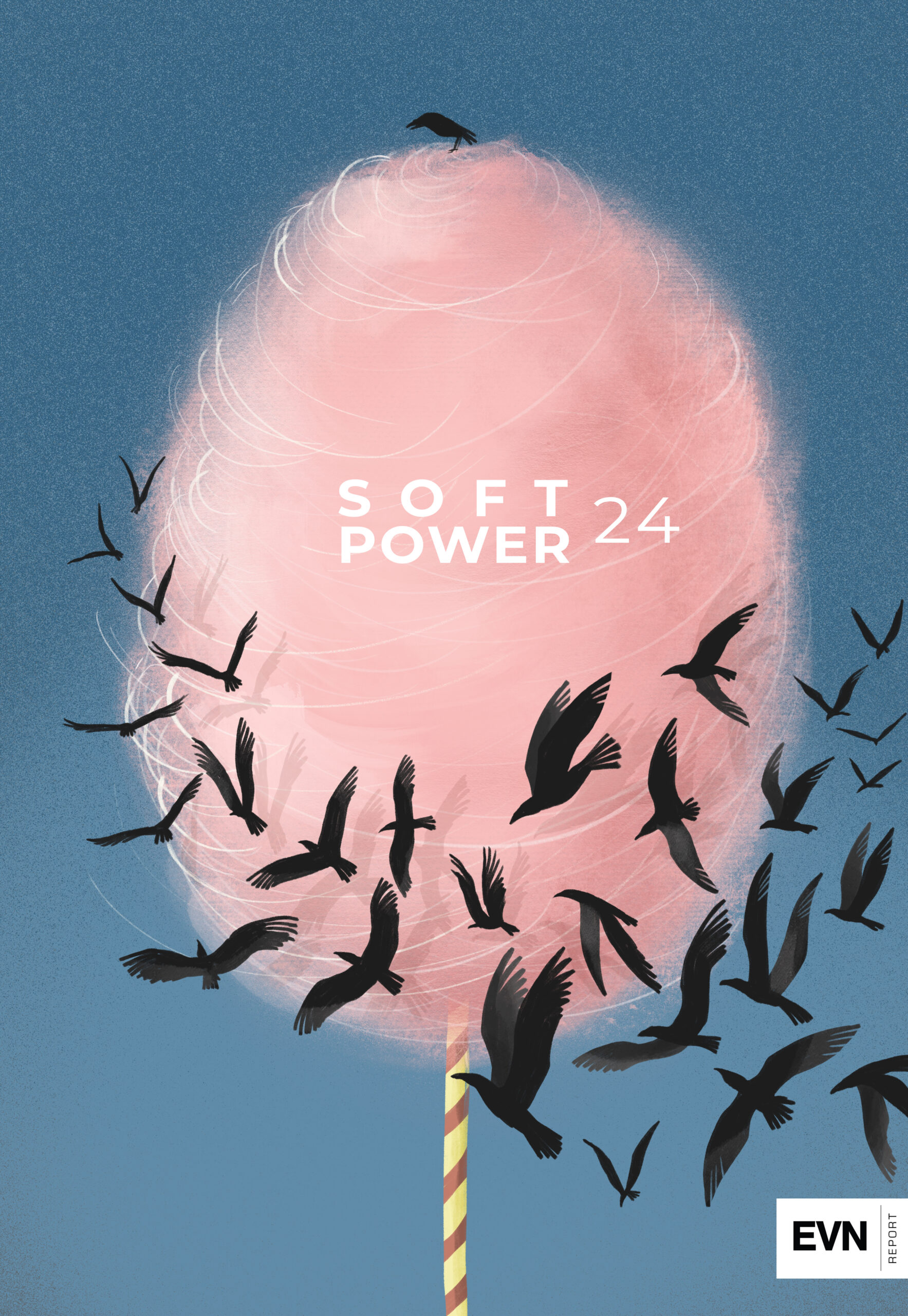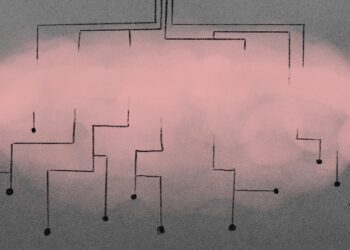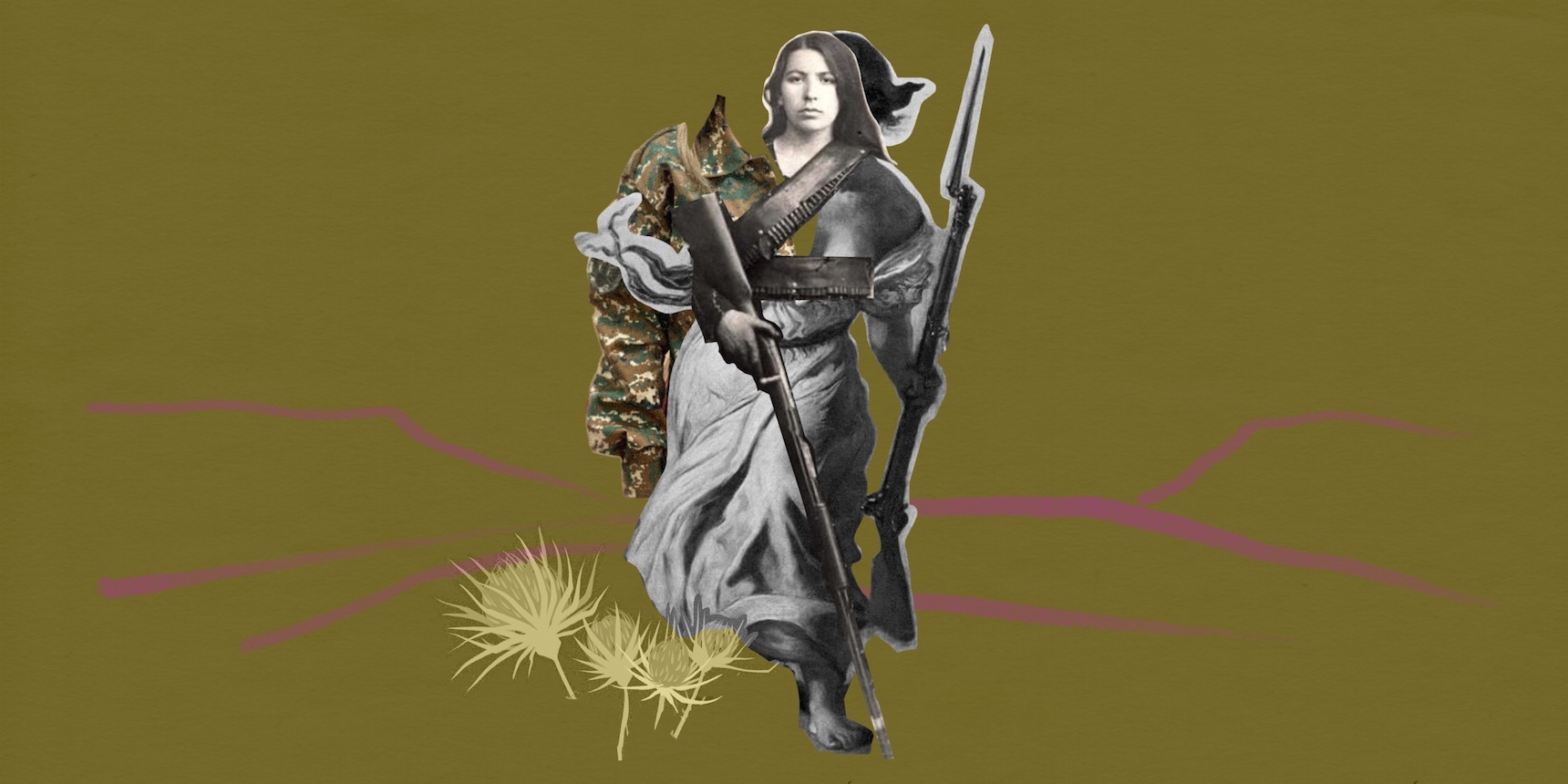

Motherhood as Defense
Sona’s* son was just 19 years old when he was killed. Like many of his friends and classmates in Armenia, he’d been called up to defend the country when Azerbaijan launched its invasion of Artsakh in 2020. Along with more than 4,000 other mothers, she received the dreaded news that her son would never return home from the frontlines.
Even as she mourned her son, and struggled to raise her other two children amid grief and loss, relatives began to pressure Sona – already well into her 40s – to try for a baby again, in the hopes of having a boy to replace the one she lost. While she resisted the expectation to have a fourth child, other families bereaved during the war made the choice to conceive again.
While the decision to have another baby, even under these circumstances, is driven by very different personal reasons, in Armenian society, the sense that mothers are replacing the lost son, or that they are fulfilling their duty to help address the demographic catastrophe of losing more than 4,000 men in their prime –– a whole generation –– is inescapable.
When it comes to war, in Armenia at least, a woman’s job is seen as raising soldiers, rather than becoming one.
Patriotism in a Petri Dish
In response to the post-2020 war increase in demand for reproductive assistance from parents who lost their sons in the war, the Armenian government began providing fertility treatment, including in vitro fertilization, for free to veterans and the families of fallen soldiers. Previously, the program was only available to women under 42 years of age, but was then raised to 53.
As a country of just three million people facing a demographic crisis, and one qualified as a national security concern, a societal-wide sense of a need for fertility drives pro-natal policies and behavior.
Women on the Battlefield
But with many Armenians sensing that their country is facing an existential threat from its neighbors, more and more women are looking for ways to defend their country, beyond motherhood.
External threat levels are seen to establish a baseline need for recruitment and the public’s overall attitude towards the military. Seemingly increasing numbers of women in Armenia have been joining both the Armed Forces as professional soldiers as well as nonprofit paramilitary organizations for voluntary military training.
The first time the role of the military in society entered public debate was in October 2016, when Former Armenian Defense Minister Vigen Sargsyan launched the Nation-Army concept note, ostensibly to promote closer integration of Armenia’s military and society. The idea raised much consternation among the public and civil society. This was in large part because the concept note was poorly fleshed out and was largely top-down with the ideology being mainly propagated by official bodies and not from society. Two years later at a National Army Day ceremony, Sargsyan assured that women will be granted equal rights and opportunities if they pursue a military profession –– a superficial statement that did not address many concerns over the role of women in this new conceptualization of Armenian society.
Civil society actors worried that the concept encouraged a hypermasculine, militarized culture. In an interview with Yerevan’s Women’s Support Center, Gohar Shahnazaryan of Yerevan State University said it seemed to pit pro-Russian and pro-militarization narratives against pro-European ones. In her work in Analyticon, independent feminist analyst and activist Anna Nikoghosyan stated that the Nation-Army concept note also seemed to codify “a union between a man and a woman, and [imply] the existence of marriage and children, of which boys are desired and will serve in the military,” while women’s main role was to reproduce. At the same time, Nikoghosyan states, “gay, bisexual, and queer women don’t fit into this militaristic strategy… Therefore, their lives become unimportant, their experiences ignored, and the violence they endure silenced.”
The Nation-Army concept fell by the wayside without being realized, especially with the change in government after the 2018 Velvet Revolution. Two years later, however, Armenian society was subjected to a brutal war. The growing existential threat posed by Azerbaijan in the post-war period brought discussions around militarization of Armenian society again to the fore, with a sense of a greater need for defense preparedness, both of the Armenian Armed Forces as well as in society.
As a result, independent paramilitary organizations in particular have experienced an explosion in interest and participation, including increasingly that of women. This has occurred simultaneously to the gradual expansion of opportunities for women in the Armenian Armed Forces, including in increasingly diverse combat roles.
Serving Her Country
Narine*, a 28-year old female servicemember and combat veteran of the 2020 Artsakh War, says that negative stereotypes around women servicemembers still persist in the Armed Forces. “The army is a large entity and I can’t paint it in broad brushstrokes,” she clarifies. “There are many military units and groupings and each has its own distinct culture and mentality that can be very different from the next. That culture and mentality often comes from the commander, but it’s also produced from within the unit.” She explains that the culture of each unit largely impacts how female servicemembers are perceived in each location.
“Sometimes male soldiers can see women in their ranks as a threat. In many other cases, however, women are seen as a source of motivation to be better soldiers,” Narine says. “I have had soldiers in my unit tell me, ‘how good it is that we have you, you make us prouder to serve.’”
There have been changes in the recruitment of Armenian women soldiers, and in particular, policy changes around programs in military academies, especially since 2013, when the Defense Ministry opened the doors of the country’s two military academies to women. These changes are currently being accelerated with the ongoing transition to a professional army and modernization of the army, which includes plans to increase the involvement of women in combat units even more.
Many obstacles remain for women in the Armed Forces, but Narine says that the Defense Ministry is making an effort to create better conditions for women, because as she explains “military units weren’t established with women in mind.”
Structures and Attitudes
Women’s participation in militaristic structures doesn’t automatically make them gender-neutral in response to their presence –– they rather join institutions with long histories of masculinized structures. Territorial defense and military doctrine are ultramasculine spheres of Armenian security. While this fact has not translated into more security or contributed to conflict resolution, Armenian women are still largely excluded from holding high-ranking positions and they have also been sidelined from serving as strategists, theorists and policy analysts.
In Armenia, as elsewhere, soldiers are expected to be men, whose role is largely to protect women and children from the enemy. Women in Armenia, as elsewhere, are perceived as “beautiful souls” –– pacifists because they are seen to be naive about the nature of war. It is an attitude that ignores observable evidence to the contrary –– Armenian women have been soldiers and fighters throughout history. Their role as fighters simply goes overlooked, with cultural framing emphasizing their role of mothering and nurturing future soldiers.
These ideas can contribute to outsized perceptions of female soldiers’ vulnerability. Even in the United States, where women have been in combat roles for some time, narratives have framed women soldiers as requiring unique protection. An example is the saga of Jessica Lynch’s rescue, a U.S. Army soldier who was captured by Iraqi soldiers after an ambush in 2003 and whose subsequent rescue by U.S. special operations forces became one of the most covered accounts of the war in Iraq. The story is significant in that it exemplified media representations of female soldiers, and singled her case out because she easily fit a submissive female archetype, whose rescue was a symbolic act that encouraged masculine constructions of warrior heroes.
Such characterizations can be harmful to women’s acceptance and validation in militaries as they can be seen as a drain on resources or even a liability.
After Azerbaijan’s invasion of the Republic of Armenia in September 2022, Azerbaijani soldiers circulated a video of a female Armenian servicemember killed in action whose body had been mutilated. While videos of the torture and mutilation of male Armenian servicemembers have also been disseminated, the extreme violence enacted on the body of the servicewoman was notable. While many observers commented that the video was an attempt by Azerbaijan to discourage Armenian women from military service, it is perhaps more likely that it was used to demoralize Armenian men –– demonstrating that they were incapable of protecting an Armenian woman.
Doubly Victims of Violence?
Arpy Manusyan, a social researcher at Socioscope, notes the historical exclusion of women from soldiering and women’s fight for the right to serve as soldiers. “There was always a temptation to view the fight for women’s engagement in the military as a way of overcoming gender inequality,” she says. “Here I’d refer to Cynthia Enloe, who argues that we should question not equality in the military but militarization itself and the masculine culture that reproduces it.”
One of the main problems according to Manusyan is the type of societal relations that more militarism encourages. “Militarism privileges violent forms of masculinity which have negative consequences for the safety of women, other vulnerable groups and society as a whole,” she says. “Militarism and all forms of violence against women are interlinked as dominance, which becomes a legitimate form of social relations.”
Manusyan says that as challenging as it may be, in post-war Armenia, “it is necessary not to see women serving in the military as equality with men, but rather to critically assess the dangers of militaristic ideology which perpetuates societal violence to which women in Armenia are disproportionately subjected to.”
In this view, Armenian women can become double victims –– both of patriarchal Armenian society as well as of the enemy on the battlefield. Global perceptions of women expect them not only to become mothers but, in Armenia’s case, also increasingly to become a soldier herself, even as attitudes from fellow male soldiers are still unfavorable.
After a few years in the army, Narine says she understands Armenian men’s trepidation around women soldiers. According to her, when a female comrade dies on the battlefield –– an all too frequent occurrence in recent years –– the shock and loss hits her peers harder than that of their male colleagues. “Maybe,” she says, “because in Armenian culture, men are expected to defend their women. And sometimes, they can’t.”
Magazine Issue N26
Hard Power
Power shapes behavior and is the ability to influence or control the behavior of others. Using military and economic means to affect the behavior of other actors or compelling an adversary through the threat or use of force to comply with your will is considered hard power. Soft power, on the other hand, influences the preferences of actors not through coercion or brute force, but through diplomacy, persuasion, convincing and finding common ground. Soft power can be effective, however, many nations around the world supplement it by hard power.
This month’s magazine issue entitled “Hard Power” features articles on the concept of hard power, the necessity to create territorial defense forces, reforms and professionalization of Armenia’s Armed Forces, Armenia’s quest to procure arms and the role of women in the military.
Armenia’s Quest to Procure Arms
Since the 2020 Artsakh War, Armenia has faced an uphill battle of recovering and upgrading its arsenal. The latest Azerbaijani invasion in September 2022, made the complexities of arms procurement, and the endeavor of doing so independent of Russia, central to Armenia’s strategy.
Read moreBuilding Armenian Territorial Defense Forces
Attempts are being made to carry out military reforms as well as to form a capable Territorial Defense Force in Armenia, but these processes have been progressing slowly, writes defense analyst Leonid Nersisyan.
Read moreMagazine Issue N24
Soft Power

